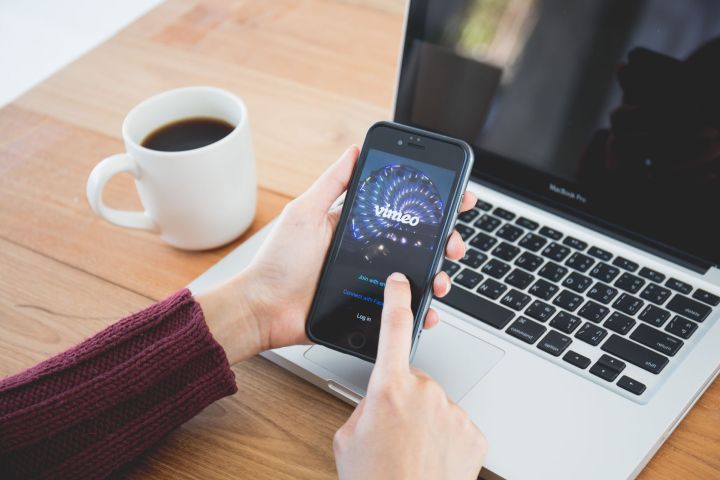
“You” aren’t just you any more. You’re also your Facebook page, your Twitter profile, your Google account, and a whole lot more besides. Keeping track of all those accounts — and the passwords for each of them — is getting more and more difficult as more accounts get added to the pile of personal profiles. If you’re struggling to keep on top of your accounts, then a password manager is a great addition that can help to streamline your digital life.
If you’re using an iOS device like an iPhone or an iPad, you might not be aware that you already have a pretty capable password manager built in by default. Introduced in iOS 12, Apple’s Passwords and Accounts tool is a great way to keep track of your accounts and passwords without having to set anything else up. Here’s how to use iOS 12’s Passwords and Accounts tool to make your digital life easier.
iCloud Keychain

One of the best uses of the Password and Accounts tool is password storage, and iOS 12 offers the ability to store app and website logins in your iCloud Keychain, making them accessible on any device linked to your iCloud account. But it doesn’t stop there — you can even use the tool to generate strong passwords and autofill any passwords stored inside your iCloud-based password vault, making it super-easy to manage your account passwords.
Storing passwords

Storing passwords in your Apple iCloud Keychain is easy. Log in to one of your apps or a website, and once the login is successful, a pop-up will ask you whether you want to save these login details to your iCloud Keychain. Hit Save password to add your details to your Keychain, and it’s saved.
If you want to see your stored passwords, access your Settings menu, then scroll down until you see Passwords & Accounts. Tap that, then hit Website & App Passwords. You’ll need to confirm your identity with Touch ID or Face ID, but once that’s done you’ll have access to your full list of login information.
Creating super-strong passwords

The iCloud Keychain isn’t just a great way to store your existing passwords, it can also help to make sure your passwords are as strong as possible. Most passwords picked by humans make sense; they’re usually a single word, maybe with some capitals or some numbers thrown in. That’s because we need to be able to remember them time and time again — and it’s easier to remember words with logical beginnings and ends than it is to remember random strings of characters. Unfortunately, those random strings of numbers make for much stronger passwords, so your profiles are much safer using a mad jumble of letters instead of, say, “BigMac1.”
Thankfully, Apple has implemented the tools to make your security stronger without needing to remember random gibberish. If you’re registering for an app for the first time — or registering on the Safari web browser — iOS 12 is able to suggest a super-strong random password for your account, which is immediately saved into your iCloud Keychain for easy logins later on. To give this a go, sign up for a new account, and after typing in an email address or username, tap on the password submission box. Then, iOS 12 will fill it with a long string of random characters, and give you the choice of saving it to your iCloud Keychain. Just tap Use strong password to save it into your account, then complete your registration.
Not working? Make sure you have Autofill Passwords switched on. To turn it on, go to Settings > Passwords & Accounts > Autofill Passwords, and make sure the Autofill Passwords option is selected (green), and the iCloud Keychain option is also ticked.
Autofilling passwords

Autofilling will likely be the Password and Account tool’s most used feature — and it’s really easy to use. Once your passwords are saved in the iCloud Keychain, you can bypass the rigmarole of typing in your email or username and password every time you need to log into an app or website, and just get iOS 12 to do it for you.
To give it a whirl, tap on the username or password box for a login, either on the web or in an app. If iOS recognizes there’s a login for this app or site, it’ll suggest a login above the keyboard. Tap that, and it’ll confirm your identity with either Touch ID or Face ID. Once confirmed, it’ll automatically populate the username and password for you, so all you have to do is tap the login button.
If you’re having trouble with your autofill, make sure Autofill Passwords is switched on. It’s the same method as in the section above: Go to Settings > Passwords & Accounts > Autofill Passwords, and make sure the Autofill Passwords option is selected (green), and the iCloud Keychain option is also ticked.
Using other password managers

If you already use a password manager like LastPass or 1Password, you don’t have to ditch your tried-and-tested password buddy. Instead, you can link it up to iOS 12 and pull from their password vaults instead.
To get started, download your chosen password manager. Then, head to Settings > Passwords & Accounts > Autofill Passwords, and select your password manager from the list — you may need to tick the Autofill Passwords switch to show your options. If you don’t want or need the choice, you can also untick iCloud Keychain to make sure your preferred password manager is always at the top of the list.
This isn’t all iOS 12 is good for though; Apple did a bang-up job adding new features and optimizations to its newest operating system, and you can check out some great iOS 12 tips and tricks, as well as some of the best improvements in iOS 12.


